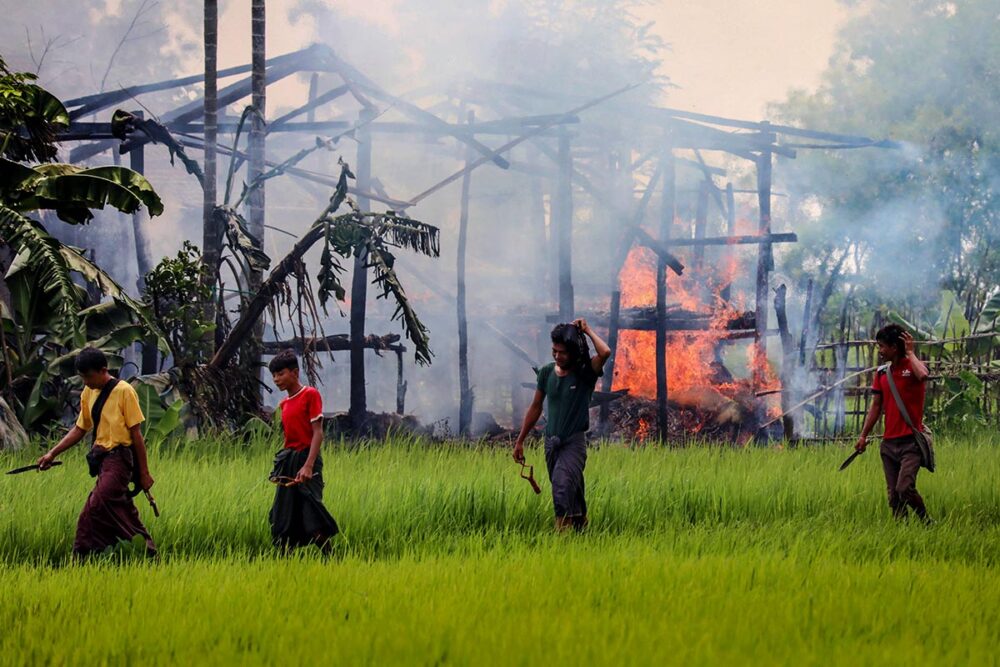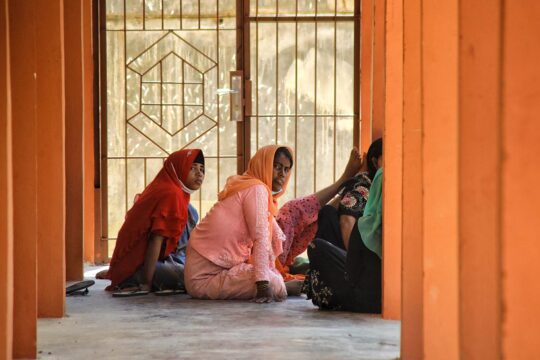The military leadership in Myanmar is facing multiple legal attempts to hold it accountable for the mass expulsion of Rohingya in 2017, where hundreds of thousands left their villages in Rakhine state, in the south-west of the country, and ended mainly in refugee camps in bordering Bangladesh.
At the International Court of Justice (ICJ) the Gambia has invoked the 1948 genocide convention against Myanmar in a case supported by at least 11 other states. At the International Criminal Court (ICC) the prosecution has applied for an arrest warrant against Myanmar’s president and commander-in-chief Min Aung Hlaing, outlining alleged crimes against humanity committed by the regime in forcibly deporting the Rohingya.
Created in 2018 by the UN Human Rights Council, the Geneva-based Independent Investigative Mechanism for Myanmar (IIMM)’s mandate is to collect and preserve relevant evidence and prepare analysis to facilitate criminal prosecutions. In a new report released on September 29, it includes legal analysis of how the crimes it has identified can be classified as genocide, saying that “deliberately inflicting conditions of life calculated to bring about the physical destruction of a group includes the systematic expulsion from and destruction of homes”.
The report builds on the previous analyses the IIMM has completed into Myanmar’s 2017 actions, known as “clearance operations”, re-emphasising that there was a “campaign of mass atrocities against the Rohingya population of Rakhine state, marked by the burning of villages, mass killings and widespread sexual violence”. It was “the culmination of decades of systemic persecution and disenfranchisement of the Rohingya population” which had deep roots, says the IIMM: “Long before the 2017 atrocities, the Rohingya had been stripped of citizenship, excluded from education, denied healthcare, and marginalized from political participation”.
“Could my name be in there?”
This analysis focuses on “the entities and associated individuals who ordered, oversaw, carried out and financially benefitted from the destruction and demolition of Rohingya villages”. It also details how border guard bases were built “on top of the razed villages” and which companies and individuals could be held responsible.
The report takes as examples seven specific villages “because they demonstrate a systematic pattern” of destruction and were turned into border guard bases. These villages “provide the strongest evidentiary record to date that the 2017 clearance operations combined land seizure, targeted destruction of livelihoods, and forced displacement to erase Rohingya presence from their ancestral homeland”.
Evidence goes from “geospatial imagery [that] shows scorched terrain, debris, and burned trees,” to “survivors [who] reported that entire areas were bulldozed, leaving only overgrown vegetation where once the homes, schools and businesses of thriving Rohingya communities had stood,” to “Myanmar security forces and State-contracted companies [that] deliberately destroyed Rohingya cemeteries, mosques and other communal landmarks,” to the “absorption of Rohingya land” into bases making “permanent the displacement of Rohingya… and the erasure of their villages”. “By paving over sacred and communal spaces, the authorities obliterated material proof of Rohingya history, making future claims of belonging or return more difficult. By destroying cultural and religious property, Myanmar security forces and Rakhine State authorities physically displaced Rohingya communities and disrupted their cultural continuity in northern Rakhine State,” the report says. “One man from one of the villages, Ah Lel Chaung, where now No 8 BGP [Border Guard Police] Battalion base has been built, linked the confiscation of land to his displacement, saying ‘Our lands have been taken away, and we do not have anything to do here and will not be able to survive here, so we will have to go from here’.”
In the 19-page public version of the report, some details have been redacted. “I always feel it's a good thing to have people who might be involved in financing crimes to wonder, should I sell these weapons? Could my name be in there? I want every perpetrator to think there's a file on him, or at least to go to bed at night worrying about it,” explains Nicholas Koumjian, head of IIMM, in an interview with Justice Info.
A textbook approach to genocide
The material quoted is from “a wide variety of sources,” Koumjian insists. “We don't have access to Myanmar. But now there's so much evidence on social media. Even things like the chain of command can be found on the internet. It's very critical to have an open-source unit. They contributed a lot to this report,” alongside witnesses who “showed us the documents that they have regarding their land rights”.
Some of the material had been collected by the NGO Commission for International Justice & Accountability (CIJA) from abandoned military outposts, including 206 pages of documents. “I’ve worked on five separate genocide cases before and this was some of the most compelling evidence I’ve ever seen,” says a former senior member of CIJA on the condition of anonymity. “The case was made clear by a mixture of excellent evidence. We had good open-source material like Facebook posts exposing state policy as well as good documentation of criminality on the ground. And then these abandoned internal documents that we took custody of really completed the circle. These internal government documents clearly demonstrated a state policy to control and monitor the Rohingya population, surveil and target Rohingya communities with violence, including property-related criminality, and then conceal the treatment of the Rohingya population. In total, an almost watertight case of atrocity crimes, including genocide.”
Genocide scholar and associate professor at the university of Western Australia Melanie O’ Brien describes it as “a textbook approach”. This is “very specific and quite significant evidence” which she was “really impressed that they were able to get”, including on “the connection between the government and the local companies and the bigger companies”. She adds: “What jumps out at me from this report is that this is a pattern that directly echoes previous genocides, including the Armenian genocide, the Holocaust, the Cambodian genocide, and current genocides like in Gaza. So it's part of the play, an essential part of the genocide process, I believe.”
Could the report lead to new arrest warrants by the ICC or other national courts? “What we're looking to do is to facilitate criminal prosecutions at a high standard of proof. I don't want to overstate it – that we have case files ready to go against Mr. So-and-so – but we have information to share that could be the basis of investigations,” says Koumjian prudently.








